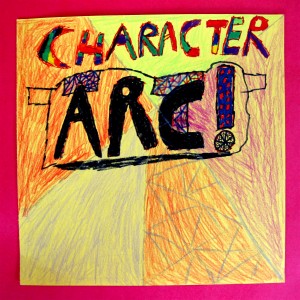 Great
characters can make or break a novel. That is why authors work hard to
develop these players. Big time authors get a lot of mileage out of one
good character. Rowling certainly did that with Harry Potter, Nelson
DeMille created John Corey and has had long string of bestselling books.
One of my favorites is Doc Ford in the Randy Wayne White series set in
Sanibel Island, Florida.
Great
characters can make or break a novel. That is why authors work hard to
develop these players. Big time authors get a lot of mileage out of one
good character. Rowling certainly did that with Harry Potter, Nelson
DeMille created John Corey and has had long string of bestselling books.
One of my favorites is Doc Ford in the Randy Wayne White series set in
Sanibel Island, Florida.
Back in April, JD Mader posted an article in Indies Unlimited on character development and descriptions.
He did a great job of breaking down character development of both
physical and psychological traits. Today, I want to take his post a step
further and discuss character arc. Character arc is essential to story
success.
So what is character arc?

It’s
the growth of your character whether through a single novel or an
entire series. It’s how the character learns as a result of their
experiences. In my opinion, it’s HOW your character APPLIES that learning to the future conflicts and experiences that they must overcome.
When you’ve created a great character arc, the story doesn’t just end,
it stays with you.
How
do we go about creating a character arc? Should this be an intentional
process?
Well, you can decide if you are a pantser or planner, but in
order to achieve an impactful character arc, you might want to know
where they started and where they are going.
What
kind of inner demons does your character hide, what are their
shortcomings and faults? What does the character need to learn
throughout the evolution of the story? If you are writing a series, does
your character figure everything out in one book? No way. Each book in
the series should be an open and shut story, but, the overall character arc keeps the series growing from book to book.
This
doesn’t mean that the character arc is your main theme of the story,
although sometimes it is. An effective character arc can serve as a
sub-plot to your overall theme. Will they fall in love, will find the
gold, will they live or die, win the game or any dramatic
question—that’s what defines the sub-plot.
Combine character arc with a great sub-plot and BAM,
you’ve got yourself a winner. If your main character has inadequacies
and weaknesses that prevent them from achieving their ultimate goal,
that leads to the backstory. The backstory is where you can share those ugly inner demons that give your hero their chinks in their armor.
 |
| Character Arc = Meaning and Soul |
It
doesn’t always have to be inner demons, it could be a coming of age
story. In a general sense, sub-plot may concern the ability of your hero
to engage in a mission in a life or death situation. It could be a love
interest. It could be how your hero handles an addiction while running
for a national election. If your main plot is a love story, maybe your
sub-plot may concern how the hero handles a Ponzi scheme dealing
brother-in-law.
In my debut novel, The Card,
the plot centers on the main character, Van Stone, and the mystery
behind a baseball card. However, the sub-plot surrounds the growth of
Van as he handles some very adult situations. Van evolves throughout the
story, as does his character arc.
The
culminating scene where Van is fighting for his life is a part of the
main plot. It could be one of hundreds of scenes in hundreds of books.
If you picked it up at that point and started reading, you might just
write it off as another action scene. You don’t have any skin in the
game. You have no reason to care for the hero—heck, you might even be
rooting for the bad guy?
However,
if you’ve uncovered Van’s inner demons and the obstacles he’s had to
surmount—now you’ve got something. There’s a reason for wanting to see
him win. You want to cheer on the hero. You want to find out if he
solves the mystery or gets the girl. When the main plot and sub-plot
come together, you have magic. When the character arc intertwines each of these—you have meaning and soul.
It
important to know the differences between main plot, sub-plot and
character arc and then become expert in them all. A strong character arc
intertwined into the plot components of your story will help your
reader identify and ultimately root for your hero. It will give meaning
to the mission. It will turn readers into raving fans.
* * * * *
The post appeared in Indies Unlimited at an early date. Jim Devitt is a Contributing Author for Indies Unlimited and the author of the #1 Kindle Bestselling novel, THE CARD, and can be found out here.


I enjoyed this post when it first appeared on IU and reading it here, reminds me why. Lots of great information. I'm bookmarking this, Jim!
ReplyDeleteThanks Jo-Anne, I really appreciate the support! Thanks for finding me over here.
ReplyDelete